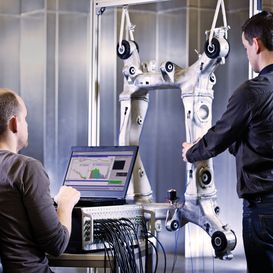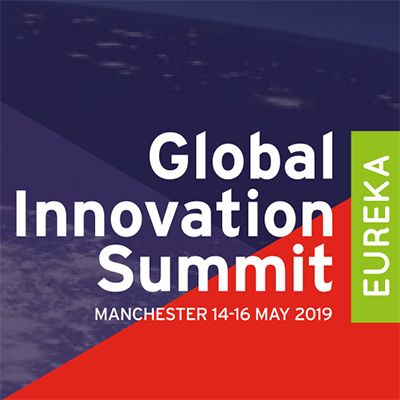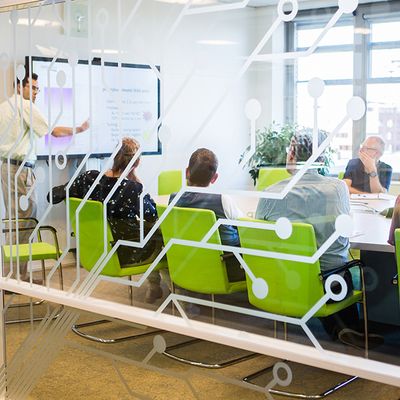Country focus on Belgium
Collaboration is a crucial economic factor …
and software innovation is an essential (integral) component
Head of the entity International Collaboration and Strategy at the Flanders Innovation & Entrepreneurship Agency (VLAIO), Maarten Sileghem, explains the crucial nature of collaboration in encouraging, supporting and strengthening innovation and entrepreneurship in the region, not to mention the vital role of software innovation throughout the industrial landscape.
Four spearheads
In brief, VLAIO works closely with local actors and with the support of international commitments in programmes like EUREKA, EEN and H2020 to focus on four strategic spearheads: the stimulation of growth and innovation through grants to business to enable ongoing growth, transformation and innovation, such as the SME growth subsidy, SME innovation and R&D projects; the promotion of entrepreneurship, working with strong partners that assist SMEs through start, growth and acquisition, also encouraging them to network for growth; cluster support whereby organisations are facilitated in galvanising cooperation and dynamics within a group of enterprises and knowledge institutions; and improving environmental factors through enabling the development of industrial areas.
Tools and instruments
Sileghem makes the point that VLAIO has more of an instrument-based approach. The VLAIO view is that the ICT industry, and especially the software and software-intensive sector, has really become an ‘embedded’ component of the entire industrial landscape rather than a separate domain in the context of expanding digitalisation. “Our focus lies in the businesses themselves and in trying to provide them with the tools and instruments to innovate so that they can be more competitive. Our approach is less thematically geared than our Dutch neighbours, so that makes us complementary, you could say, rather than being carbon copies.” However, Flanders does provide a vehicle for some degree of thematic collaboration through a number of large research centres that work very closely with industrial partners. Sileghem gives a couple of examples. “We have the recent fusion of iMinds in the area of broadband technology and imec in the field of microelectronics and nanotechnology, creating a world-class research centre in the field of nanoelectronics, excelling in software and ICT. It is here that ICT, software, hardware and nanotech find their expression in an integrated approach towards industry. For us, the role of software in this whole process is a vital one, certainly in the two most innovative sectors in terms of R&D, pharmaceutical and ICT. But, of course,” Sileghem explains, “we see that the nature of the software is becoming increasingly embedded. The same evolution is also evident in industry. A major player in software innovation in Flanders, Leuven Measurement Systems (LMS) International, known for its virtual simulation software, was integrated in the larger Siemens group some 5 years ago. As Siemens Industry Software NV the enterprise continues to be a crucial player and a spearhead in the Flemish innovation ecosystem.”
Brussels-Capital region
For project partners located in the Brussels-Capital region, funding applications are handled by Innoviris. Innoviris is the Brussels Institute for the encouragement of scientific research and innovation set out to create an active, competitive, innovative Brussels-Capital region supported by knowledge. Innoviris' funding criteria for ITEA project partners:- Develop all or some of its activities within the territory covered by the Brussels-Capital region
- Present an innovative R&D&I project likely to have a favourable impact on employment and/or sustainable development of the Brussels-Capital region
- Show one's ability to finance one's share in the project
- Have fulfilled its obligations in the context of previous support initiatives allocated by the region.
http://innoviris.be/eureka-clusters
Embracing digitalisation
This embedding process is penetrating the manufacturing sector where ongoing and far-reaching digitalisation seems to be unstoppable. “This is evident in the collaboration that is taking place within the pharmaceutical and ICT industries. In the processing and use of data in medicine, ICT has a key role to play. Also in the chemical and photography sectors, for example, the shift towards digitalisation is evident as is the need for software innovation. You only have to look at Agfa, for instance.” The Agfa-Gevaert Group, a company whose international renown was built on photography and graphics, has embraced the digital revolution. It now develops, manufactures and distributes leading edge technology, affordable solutions and innovative ways of working, mainly for the printing industry and the healthcare sector, as well as for specific industrial applications. The company’s credo is that ‘investing in innovation and delivering top-quality solutions are key’ to success.
Investment with results
Subsiding participation in such projects can really act as a multiplier and make our companies more competitive. It creates real impact!
Sileghem: “We are highly focused on Industry 4.0 and the needs that come with the digitalisation of industry. As I said, we do not have a policy of thematic-based investment but we try to look at where can we add value. We see this in aspects like artificial intelligence, cyber-security, autonomous driving and healthcare. We try to promote innovation in the software that has to be incorporated in order to drive digitalisation to the next level. As a government agency, we encourage companies to undertake R&D and also work in and with Clusters to get knowledge into these companies, support access to and dissemination of that knowledge, as well as provide R&D funding. Last year that amounted to 200 million euros – quite a significant investment ‘pot’. But in encouraging innovation through R&D, we are aware that a good deal is high-risk, so it makes sense to share this risk. In addition, since it’s the tax-payer who is actually funding the R&D when it comes down to it, he quite justifiably has the right to ask the question: what am I getting for my money? In other words, the investment has to produce results. This is where a platform like ITEA earns its spurs. Rather than R&D in isolation, which most companies are neither willing nor able to do on their own, by collaborating in projects that are driven by real industrial needs, an environment is created in which companies can learn, contribute, share and gain in all kinds of ways. Like acquiring knowledge and developing networks. Subsiding participation in this regard can really act as a multiplier and make our companies that join such projects more competitive, especially on the international stage. It creates real impact.”
Subsiding participation in such projects can really act as a multiplier and make our companies more competitive. It creates real impact!
Impactful innovation
It goes without saying that growing internationalisation is a significant factor in the collaborative approach towards R&D software innovation. Platforms that give industry and research the opportunity to come together to create impactful innovation are becoming increasingly important. “In this respect,” Sileghem says, “ITEA has always played a key role in providing this opportunity. There can be no doubt that collaboration is absolutely crucial for our industry, both as a region and as a country. And in the future it will become even more crucial. This goes for the large players and the small and medium-sized enterprises, too, for whom we provide special support. After all, they are central to our ecosystem in which the importance of collaboration between SMEs and knowledge institutions cannot be underestimated. Our specific programmes stimulate this, like the Cluster policy that is intended to engage more SMEs with knowledge institutions. At a more downstream level, we also encourage the development of business skills to enable these collective activities to take place close to the market. In a nutshell, then, we aim to facilitate a process whereby research and industry can mutually benefit from each other, with the ultimate goal of creating impact.”
More information
https://www.vlaio.be/nl/subsidies-financiering/subsidies-voor-ooi-een-internationaal-consortium/netwerken/itea-3Other chapters
Use the arrows to view more chapters

Editorial
Zeynep Sarılar

Country focus: Belgium
Collaboration is a crucial economic factor

Country focus: Belgium - Siemens Industry Software
Innovation is a collaborative art

Success story: MoSHCA
Mobile and Smart Health Care Assistant

EUREKA Global Innovation Summit 2019
Innovating across borders for business growth: an event impression

Viewpoint
David Golding Deputy Chair for the UK Chairmanship of EUREKA

Community Talk with: Isabel Praça
Isabel Praça

SME in the spotlight: Technolution
Technolution



